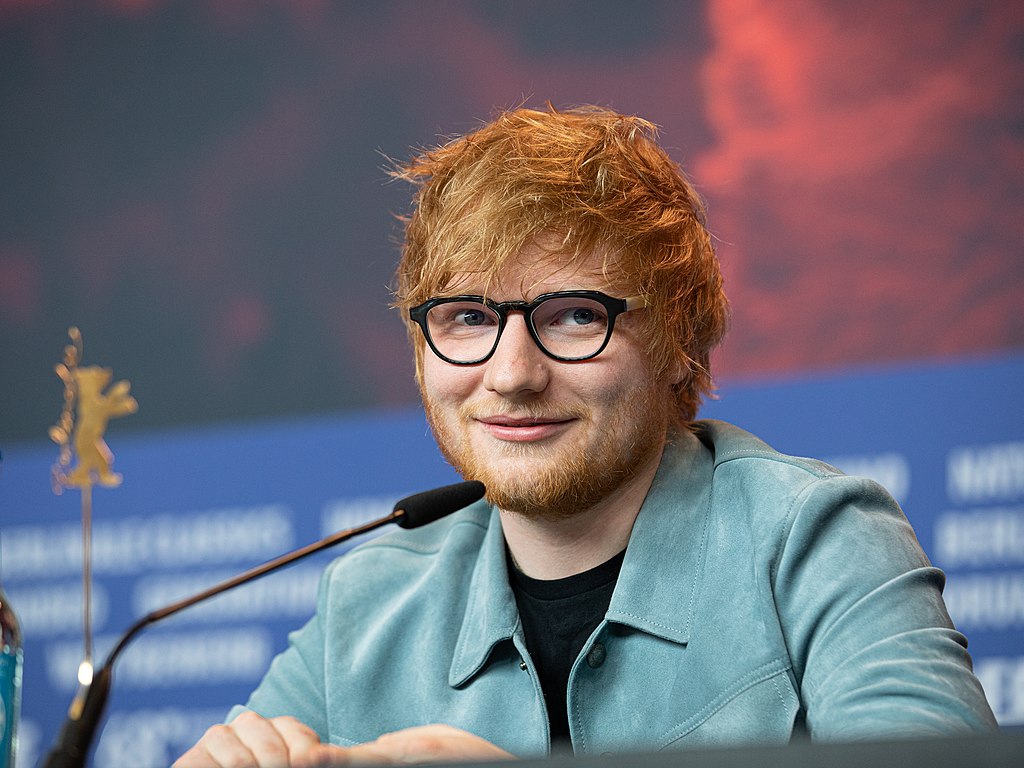Ed Sheeran came out swinging in his statement after a New York court found in his favour last week over a claim that his 2014 song Thinking Out Loud infringed copyright in Marvin Gaye’s hit Let’s Get It On. He called suits like the one brought by the estate of Gaye’s co-writer Ed Townshend “baseless” and pointed to the wider ramifications of the verdict:
I am not and will never allow myself to be a piggy bank for anyone to shake … I want to thank the jury for making a decision that will help to protect the creative process of songwriters here in the United States and around the world … These claims need to be stopped so that the creative process can carry on, and we can all just go back to making music.
It wasn’t his first time facing such charges, copyright suits being a common professional hazard. As the old industry maxim states, where there’s a hit, there’s a writ. So why did Sheeran allude to benefits for songwriters at large from this verdict?
A multifaceted legal mechanism
Copyright is complex, with numerous points of potential dispute across different aspects of the musical work in question. First, it is not a single, indivisible legal mechanism. There is copyright in the underlying work – the composition – and copyright in the recording of that work.
Where a song has been sampled without permission, for example, the recording copyright has been infringed. When Sean Coombs failed to secure clearance for a sample from The Police’s Every Breath You Take in I’ll Be Missing You, he ceded royalties to Sting.
The relationship between composition and its realisation in recording has also been contentious, especially for songs put together in the studio by bands, where verbal agreements between the members come into play.
Members of Spandau Ballet argued that contributions like vocal delivery and saxophone solos merited a portion of songwriter Gary Kemp’s royalties. They were unsuccessful, although Mike Joyce and Andy Rourke, former drummer and bassist in The Smiths, claimed and won a greater share of the songwriting spoils from Morrissey and guitarist Johnny Marr.
Intra-band disputes, however, don’t speak to the purpose of copyright in the same way as plagiarism suits. At issue for Sheeran was what counts as protectible under copyright.
Lyrics and melody have traditionally been the core musical features that enjoyed copyright protection. So when session singer Clare Torry won an out-of-court settlement from Pink Floyd over her vocal improvisation on The Great Gig in the Sky, her claim pertained to the “top-line melody” being her creation.
Likewise, George Harrison’s My Sweet Lord was found in 1976 to have infringed The Chiffons’ He’s So Fine, because there was a substantive passage in both songs where the melody was the same, and Harrison could viably be claimed to have been aware of the prior song. It wasn’t even deemed necessary for the copying to have been deliberate – the court acknowledged that plagiarism took place “even though subconsciously accomplished”.
Protecting past originality and future creativity
The purpose of identifying copyrightable features of compositions is to incentivise creators, allowing them to profit from their originality.
Simultaneously, though, copyright was designed to benefit society by facilitating a common creative culture through a body of work in the public domain that others can draw on. This is why it is limited in both time (how long a work remains under copyright) and scope (the specific elements that are protected).
The smoking gun in the Sheeran case, according to the plaintiff’s legal team, was a live performance segueing between the songs and demonstrating a shared a I-iii-IV-V chord sequence.
Sheeran’s defence claimed that such chord sequences are not protectible but, rather, the common currency of songwriting. As he showed in court, and as widely illustrated by musical and comedy performances, innumerable songs share such chord sequences.
Given this shared musical language and the constraints of popular music, like genre conventions or song length, a degree of similarity doesn’t automatically imply plagiarism. What’s more, musicians learn by imitation and take inspiration from the huge body of work that precedes them.
The legal question, then, isn’t whether two songs are similar, but whether the resemblance can be shown to reside in protectible elements of the prior work, and to constitute a substantial enough part of both songs to fall outside of being common currency. Is it a protracted rather than just a fragmentary stretch of melody, for instance?
Copyright suits in US circuit courts can set precedent. Indeed, it was findings against hip-hop artists’ early use of samples in the 1980s and 1990s that defined the need to license such samples.
There are also debates about whether using juries of lay members of the public is the best way to decide complex copyright disputes, especially where the protected status of musical elements is unclear or counter-intuitive.
This was the case with Blurred Lines, where the song’s general feel and production were found to have breached copyright in another Marvin Gaye song, Got To Give It Up, despite a lack of melodic or lyrical overlap between them.
The risk is that lawsuits expand copyright’s remit, curtailing future creativity, especially for artists without deep pockets to sustain legal battles. This is why what was at stake in the Sheeran case was more than his artistic integrity or the musical distinctiveness of Let’s Get It On. Past originality is valuable and warrants protection, but so does the future, and the public domain.
Adam Behr has received funding from the Arts and Humanities Research Council and the British Academy



 Tunisian Opposition Figure Chaima Issa Arrested Amid Rising Crackdown
Tunisian Opposition Figure Chaima Issa Arrested Amid Rising Crackdown  UN General Assembly Demands Russia Return Ukrainian Children Amid Ongoing Conflict
UN General Assembly Demands Russia Return Ukrainian Children Amid Ongoing Conflict  Appeals Court Blocks Expansion of Fast-Track Deportations in the U.S.
Appeals Court Blocks Expansion of Fast-Track Deportations in the U.S.  Judge Dismisses Charges Against Comey and Letitia James After Ruling on Prosecutor’s Appointment
Judge Dismisses Charges Against Comey and Letitia James After Ruling on Prosecutor’s Appointment  Yellow Corp Reaches Major Settlement With Pension Plans Amid Ongoing Bankruptcy Case
Yellow Corp Reaches Major Settlement With Pension Plans Amid Ongoing Bankruptcy Case  Intel Rejects TSMC’s Allegations of Trade-Secret Leaks as Legal Battle Escalates
Intel Rejects TSMC’s Allegations of Trade-Secret Leaks as Legal Battle Escalates  UPS MD-11 Crash Prompts Families to Prepare Wrongful Death Lawsuit
UPS MD-11 Crash Prompts Families to Prepare Wrongful Death Lawsuit  Singapore Court Allows $2.7 Billion 1MDB Lawsuit Against Standard Chartered to Proceed
Singapore Court Allows $2.7 Billion 1MDB Lawsuit Against Standard Chartered to Proceed  Netanyahu Requests Presidential Pardon Amid Ongoing Corruption Trial
Netanyahu Requests Presidential Pardon Amid Ongoing Corruption Trial  Brazil’s Supreme Court Orders Jair Bolsonaro to Begin 27-Year Prison Term
Brazil’s Supreme Court Orders Jair Bolsonaro to Begin 27-Year Prison Term  Amazon Italy Pays €180M in Compensation as Delivery Staff Probe Ends
Amazon Italy Pays €180M in Compensation as Delivery Staff Probe Ends  Meta Accused of Halting Internal Research on Mental Health Risks of Facebook and Instagram
Meta Accused of Halting Internal Research on Mental Health Risks of Facebook and Instagram  Federal Judge Blocks Trump Administration’s Medicaid Funding Restrictions Targeting Planned Parenthood
Federal Judge Blocks Trump Administration’s Medicaid Funding Restrictions Targeting Planned Parenthood  CFPB Reaches $1.75 Million Settlement with MoneyLion Over Military Loan Overcharges
CFPB Reaches $1.75 Million Settlement with MoneyLion Over Military Loan Overcharges  Key Witness Seeks to Block Evidence in Potential Revival of Comey Case
Key Witness Seeks to Block Evidence in Potential Revival of Comey Case  U.S. Justice Department Orders Intensified Probe Into Antifa and Domestic Extremist Groups
U.S. Justice Department Orders Intensified Probe Into Antifa and Domestic Extremist Groups  Bolsonaro Blames Medication Mix-Up for Ankle Monitor Tampering as Detention Continues
Bolsonaro Blames Medication Mix-Up for Ankle Monitor Tampering as Detention Continues 
































